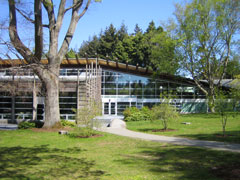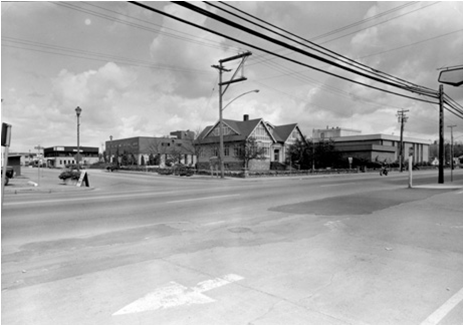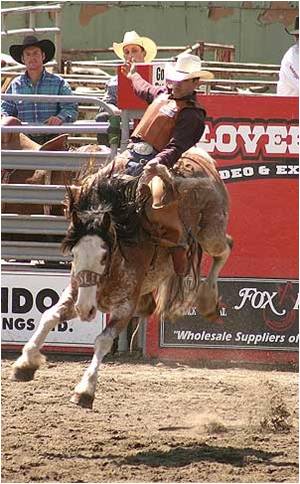In September last year SPL formed a First Nations Team whose goal is to connect with the local First Nations community, planning programs and services of interest to the community in partnership with them. After expressing an interest in the team and suggesting the relevance of family history to this client group I was invited to become a member.
As at the SLNSW Cloverdale Library is committed to delivering genealogy services to aboriginal peoples, assisting those of “Indian”, Metis and Inuit heritage trace their ancestry. Here was an opportunity to explore this aspect of the service and actually make connections with First Nations peoples living in the City of Surrey. It also tied in with the “work-based project” the State Library required me to undertake in approving the work exchange.

First Nations House of Learning (Xwi7xwa)
On February 17 Surrey’s First Nations Team met with the Aboriginal Project Team from neighbouring Fraser Valley Regional Library (FVRL). The meeting was held at the First Nations House of Learning, University of British Columbia (UBC). As well as being an opportunity to learn from each others experiences, the meeting explored ways in which the two library systems could collaborate.
The First Nations House of Learning (“Xwi7wa” pronounced “whei-wha” meaning echo in the Squamish language) was a strategic choice of meeting place. Xwi7wa library staff as well as hosting the meeting gave us a guided tour, connecting us with the library’s collections and services. Head Librarian Ann Doyle explained the symbolism of the House of Learning Logo. It consists of a human face surrounded by two ravens. The face = First Nations peoples, the ravens a symbol of learning. Hence the raven is transforming the university to reflect Aboriginal culture. This sets the mandate for the Library.

Xwi7wa Library assists in the development of First Nations/Aboriginal programs at UBC. It provides information relating to indigenous issues to Aboriginal students, the university community and Aboriginal people and organisations. The Library is developing Special Collections that will serve as a repository of archival materials by and for the First Nations of B.C. Thus the library collects papers and manuscripts created by organisations and individuals preserving these for future generations. To find out more about the House of Learning, its mandate and objectives <click here>
The Meeting
The meeting between the two libraries involved sharing details of past and present projects and initaitives and concluded with next steps for working together.
Fraser Valley’s Aboriginal Project Team was formed in May ’06. The library began by running workshops for library staff in cross-cultural communication. A facilitator came from UBC to provide a first nations perspective. Initiatives since then have included a First Nations author program “aboriginal voices”; a film festival involving all FVRL Libraries; National Aboriginal Day events, as well as resources developed by the Project Team. These include a First Nations Kit : “Lift the Lid on the Past” (history of First Nations in the Fraser Valley) and a First Nations “Aboriginal Reads” brochure listing materials by and about First Nations people available at FVRL.

First Nation Teams: FVRL left, SPL Right (David's Cap, Julie, Deanna, Linda, Mary standing)

First Nations Teams (Photo taken by Mary Murphy, SPL Team Head)
While Surrey’s First Nations Team was formed only 6 months ago, the library had already built connections with the local first nations community through it’s support of the programs of “Kla-how-eya” the local Aboriginal Cultural Centre.
Team Head Mary Murphy, SPL’s Manager of Learning Services, was instrumental in forging this connection garnering library support for the Kla-how-eya Culinary Arts Program in 2006. The Program prepares it’s Aboriginal students for working in the food industry. The Program is a prerequisite for entrance into Vancouver Community College, as well as providing skills for job seekers. The library helps provide these skills by running a “Computer Training Series” which forms a part of the Culinary Arts Curriculum. Two members of the First Nations Team Julie Calendino and Deanna Scott are course instructors. These skills include teaching students to create their own blogs, posting their own recipes. For more on the Culinary Arts Blog <click here>
Since 2006 the connection with Kla-how-eya has deepened with the library’s involvement in a number of programs across the age spectrum. These include “Headstart” – storytimes twice a month at Awahsuk Aboriginal preschool; “First Nations Community Reads” – interactive workshops with a First Nations author drawn from her book about the history of local Coast Salish peoples; “Ready to Read” workshops for Aboriginal mothers at Kla-how-eya etc. Julie Calendino as well as initiating a number of these programs has leveraged Grant moneys from the British Columbia Library Assoc. (BCLA) and Greater Vancouver Urban Aboriginal Strategy (GVUAS) to purchase First Nations materials and attract First Nations authors to library events.
Genealogy
One of the team’s initiatives is a First Nations Genealogy Online Guide. The Guide will be geared to the needs of Surrey’s First Nations, but will be of benefit to Canadian researchers generally, especially those with British Columbian ancestry. The Guide is to highlight the holdings of Cloverdale Library where appropriate, as well as key resources of other agencies at local, provincial and national level. My colleague Laurie Cooke at Cloverdale has an abiding interest in First Nations genealogy and mentioned VPL’s recent Chinese-Canadian Genealogy Guide as an example of what can be achieved. I have drafted an outline for the guide and look forward to developing the content with Laurie in the time remaining on the exchange. With less than four months remaining this will be a challlenge. Competing priorities include a Genealogy Seminar I’ve been asked to deliver at Cloverdale in May – my chosen topic: Tracing Your Australian Connections: How to Locate an Australian in Your Family
One thing that has been achieved, with the support of the Genealogy team at Cloverdale, is the creation of links to First Nations websites from the library’s Genealogy portal (filed under “Ethno-Cultural & Aboriginal Groups”)
A positive outcome when discussing next steps for working together, was a genealogy contact given to me from Fraser Valley’s Teresa MacLeod, Manager of Mission Library. Teresa mentioned a facilitator by the name of Sharon Syrette whose received a grant to deliver genealogy workshops to First Nations people in the City of Mission from January – March. Will keep you “posted” on the outcome of this…





































